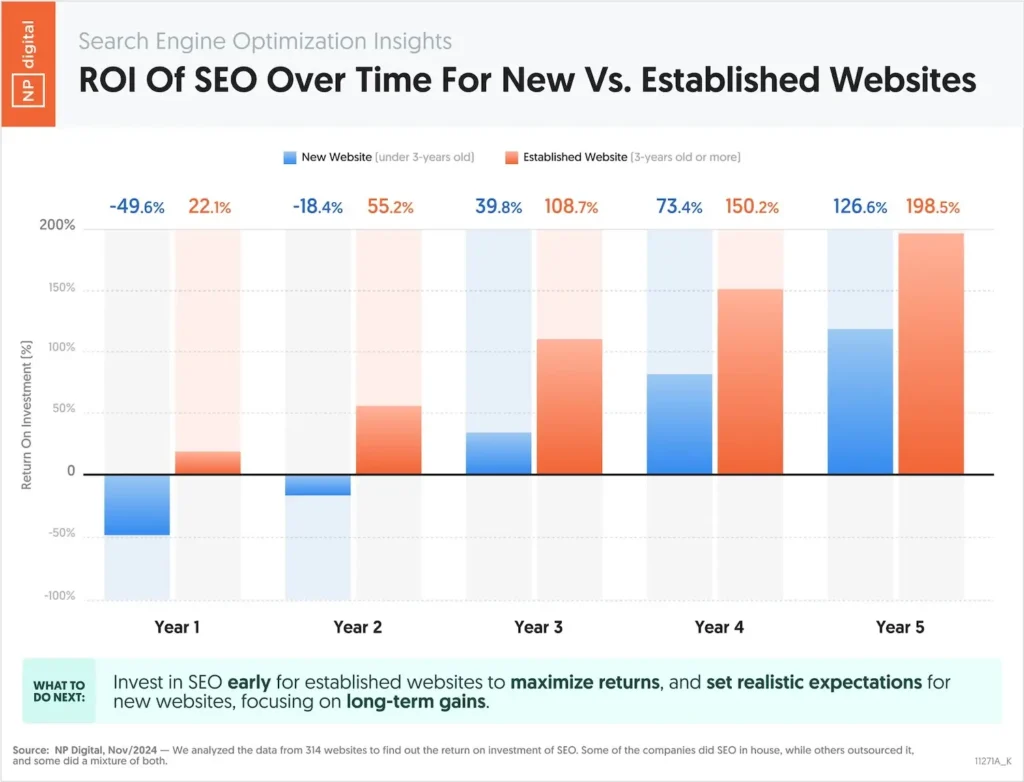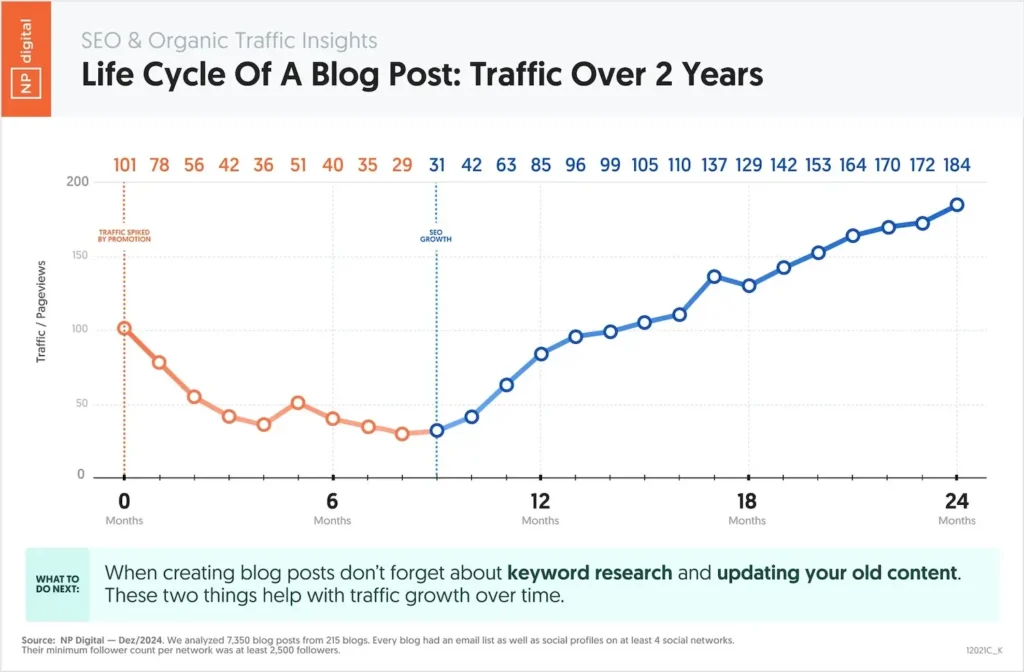Use the content marketing ROI calculator below to estimate the financial return on publishing a helpful (to your audience), search-optimized, business-to-business blog post.
The calculator is for a single blog post that should be part of a broader, long-term content marketing and SEO strategy.
Blog Post ROI Calculator
Field Descriptions
Here are explanations of each of the calculator’s fields.
Cost to Write & Update
Gone are the days of paying a writer a few hundred dollars to draft a blog post and expecting the post to be found through search.
Blog content that ranks in the search engine results is a more significant upfront and ongoing investment than it once was.
It has to have unique elements. It can’t be a different version of what’s already been written.
We’ve defaulted the investment to $2,500.
Time Horizon
Unlike paid search, where the return goes to zero when you stop paying, a well-written and well-optimized blog post can return value in the form of leads for years.
Periodic updates should be made to keep blog content fresh.
We defaulted the time horizon to three years.
Expected Monthly Organic Search Visitors
This is a difficult number to predict, as it’s dependent on several factors, including your Domain Rating, how helpful Google considers your post to be, and how difficult or easy your focus keyword is to rank for.
75 monthly visitors should be attainable with the right combination of factors.
Also, think beyond your blog post to get more ROI from your content. Remix and distribute your content as videos, public slide decks, social posts, and podcast discussions.
Expected visitor to qualified lead conversion rate
If your content is laser-focused on addressing pain points and answering questions for members of your target audience, your content is well-positioned for conversions.
Conversion Rate Optimization (CRO) is an entire topic in itself.
Our placeholder value says that one in two hundred visitors to the post becomes a qualified B2B sales lead.
Close Rate on Qualified Leads
Hopefully, this percentage will be readily available in your CRM system.
Our placeholder assumption is that one in four qualified leads will become a paying customer.
Average lifetime profitability of a customer
We decide to buck the trend and prompt for customer profitability rather than customer revenue.
If you run a B2B professional services company, this is a relatively easy number for your finance department to calculate.
Here’s a table that shows the results with more conservative numbers than the placeholder values in the calculator above.
| Cost to write and periodically update a search-optimized blog post | $2,500 |
| Time horizon in years | 3 |
| Expected monthly organic search visitors to the post | 75 |
| Expected visitor to qualified lead conversion rate | 0.25% |
| Close rate on qualified leads | 10% |
| Average lifetime profitability of a customer | $5,000 |
| Number of new customers | 6.75 |
| Expected ROI from the blog post | 35% |
According to David Spitz of Benchsights, in Q3 2023, B2B SaaS companies spent an average of $2.64 marketing dollars for every $1 of net new ARR.
Companies need to do more planning and ROI projections before sinking money into any marketing area, including blogging.
It’s worth examining how investments in quality blog content compare to your other customer acquisition costs and related returns.
According to the following chart from NP Digital, this investment is an essential slice of the marketing investment pie for many companies, especially for established websites.

This chart from NP Digital shows the growth of a single blog post over two years.


